Month: December 2020
Flatland Frequencies 21/12/20
Luke on Mutant Radio, meditating on some faves from 2020, plus some new other bits.
| Track | Artist |
| Standard | Nakayama Munetoshi |
| Loose Truth | Jack Jutson |
| Breath 3 Star | Salvaticus Selvetico |
| Bloom | Mju |
| E | Lee Evans |
| Safari Advertisement Sequence | Tony G |
| Merak (Fading Anklung) | Wu Cloud |
| Electric Counterpoint:3. Fast | Steve Reich |
| Serum 525 | Soviet Space Research Institute (SSRI) |
| The Lonely People (Are Getting Lonelier) | Stars of the Lid |
| Tur | Melanie Verlarde |

Last week we featured a premiere of Grey Skies – ‘Heavy Burden‘ from his new release, Year. To follow up, Elias has kindly provided some insight on his influences, composition and production techniques.

” After being a member of indie/post punk bands for more than a decade, and being a huge fan of ambient and experimental music I wanted to create a record that is totally different from what people who know my previous creations would expect.
Tyler Neidermayer – This Isn’t You

Vibrant electro-acoustic bass clarinet works from Tyler Neidermayer. Varied tones, textures and injections of noise to be found here, with a frankly outrageous opening 01:36 minutes to the EP.
In his words “I compose all my music through ableton live. In my studio space I’ll usually start off recording some improvisations on my clarinets and cut up samples to stretch, manipulate and make new instruments with, and from there build up the form of how I want the piece to flow. As I write I’m always thinking about how these pieces will work in live contexts and how to make these studio productions into performances. I use mics on my clarinets live along with midi controllers (push, softstep) to either capture the sound and build as I would in the studio, or to take what I’ve already made and play that fixed sound as a live instrument. This Isn’t You allowed me to explore this boundary of what is or isn’t a clarinet and place myself and my sound into new identities.”
Grab the EP and follow his future releases on band camp.

Multi-Coloured Swap Shop
Firstly, a brief backstory on how I came about owning this device. I’d been using a Make Noise Shared System almost exclusively for the past 4 years, occasionally venturing into trying other modules, but always gravitating back to the Make Noise rig. I never really fell into the ‘eurocrack’ trap of buying module after module, as for me personally, the attraction of modular synths over fixed-architecture designs, is to have each module be able to perform many different uses (of which the Make Noise excelled at).
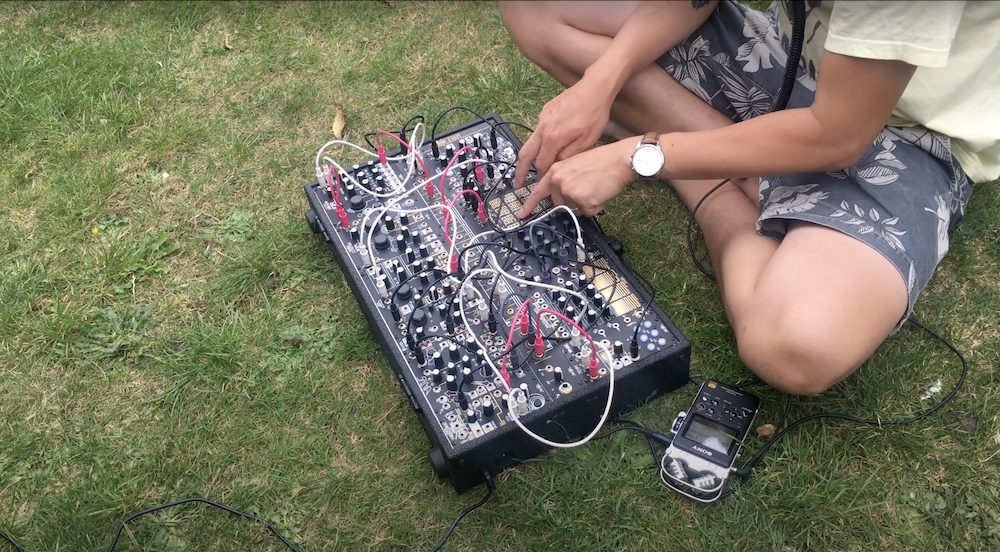
Anyway, multiple releases later and a handful of live shows (including a live session on BBC introducing), I’d kind of tired of the sounds I was composing with the system, I also found the newer Make Noise modules increasingly complex and operating the system as an instrument became more a memory challenge of button combos (I was good at this with Ken in Street Fighter 2, but sadly my short term memory is not what it was in the early 1990’s). It seemed every time I updated to a newer module (for example Phonogene → Morphagene, Rene v1 → v2, Echophon → Mimeophon etc etc) I enjoyed performing with the system less and less. Until finally it sat for many months, closed up in its case and I deliberated over selling it on numerous occasions, as I get intense guilt pangs if a piece of gear sits unused. I’m basically whatever the exact opposite of a hoarder is.
Locking shit down
During the first UK lockdown in 2020 I noticed an artist friend, who happens to live locally, was looking to buy some Make Noise modules and coincidently wanting to sell his Ciat Lonbarde setup. I was already familiar with the instruments online and had seen him perform live with the setup, so knew it sounded good loud, but other than that, I’d never laid my hands on any Ciat Lonbarde pieces (or banana synths in general). So after some lengthy discussions, we both agreed our systems were of similar monetary value and to save ourselves the painful song-and-dance of eBay selling, PayPal fees etc. We decided to swap systems, wholesale. His Ciat Lonbarde, for my Make Noise.
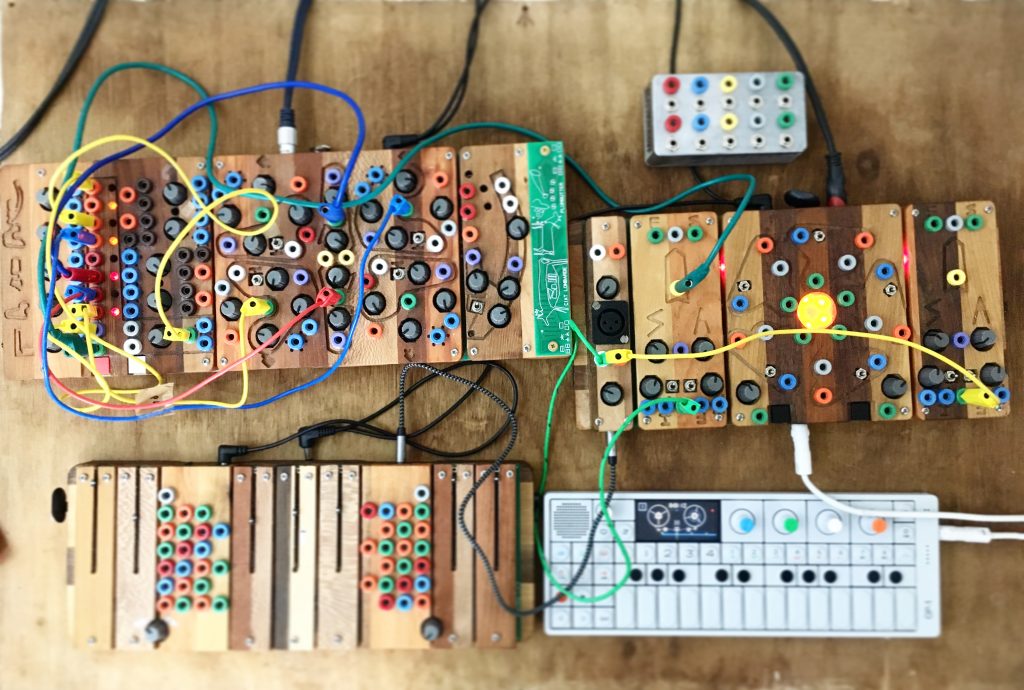
Magic Beans?
At first, I felt a bit like I’d gone to the market and swapped my (black &) golden cow for some magic (wooden) beans. But I’ve owned these noisy wooden boxes for a few months now and getting a handle on how they work and recording a motherload of tracks in the process. So in my eyes, synth inspiration (synthspiration?) is restored and these things are being used for their intended purpose (hey, synths are for music, not just instagram kids!). On the plus side, sonically, they are extremely well thought out, like a well tuned instrument, with individual elements of devices operating in distinct frequency ranges (see the various modules on the Plum Butter, for example).
I thought I’d give my rambling thoughts on these boxes (in total I got four Ciat Lonbarde devices in the swap) in a series of posts, as I begin to unravel their mysterious, yet intuitive, designs and entertaining, if slightly unorthodox, online ‘manuals’.
Crunchy Biscuits.
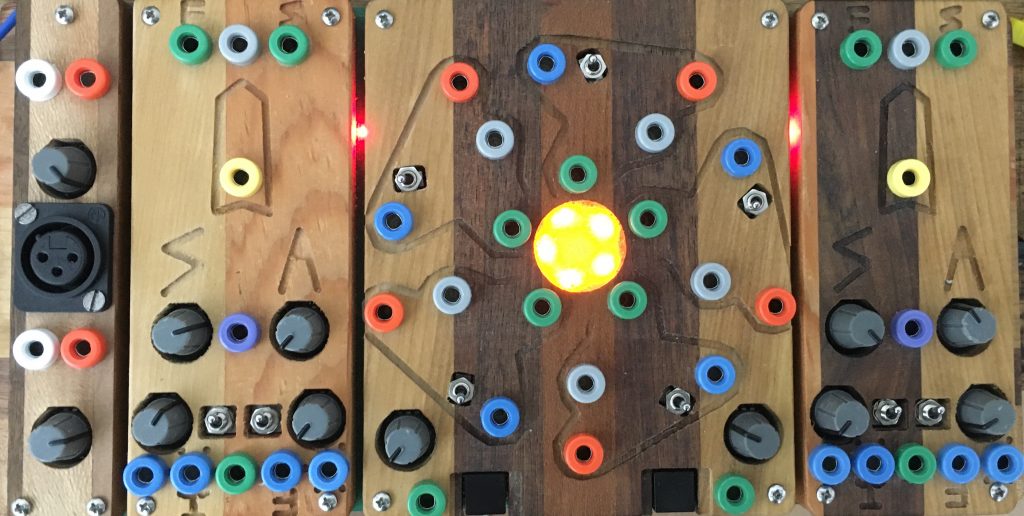
As I mentioned before, I really connected (no modular pun intended) with the earlier Make Noise modules, especially the Phonogene. It’s crunchy sonic nature and the mental aliasing it imparted on the recorded output was the basis of my ‘sound’ and the Make Noise module I thought I’d miss most. Thankfully not, as the Cocoquantus essentially has TWO Phonogenes (mono tape-style recorders), along with a chaotic matrix of five oscillators (aka ‘quantussy’) separating the two. I’d researched the Cocoquantus a fair bit prior to the swap and knew it was going to be in the same ball park sonically, but in fact the sound of the sampler(s) (possibly 8-bit?) when pitched down are so similar, I wonder if they are actually based on a similar processor?
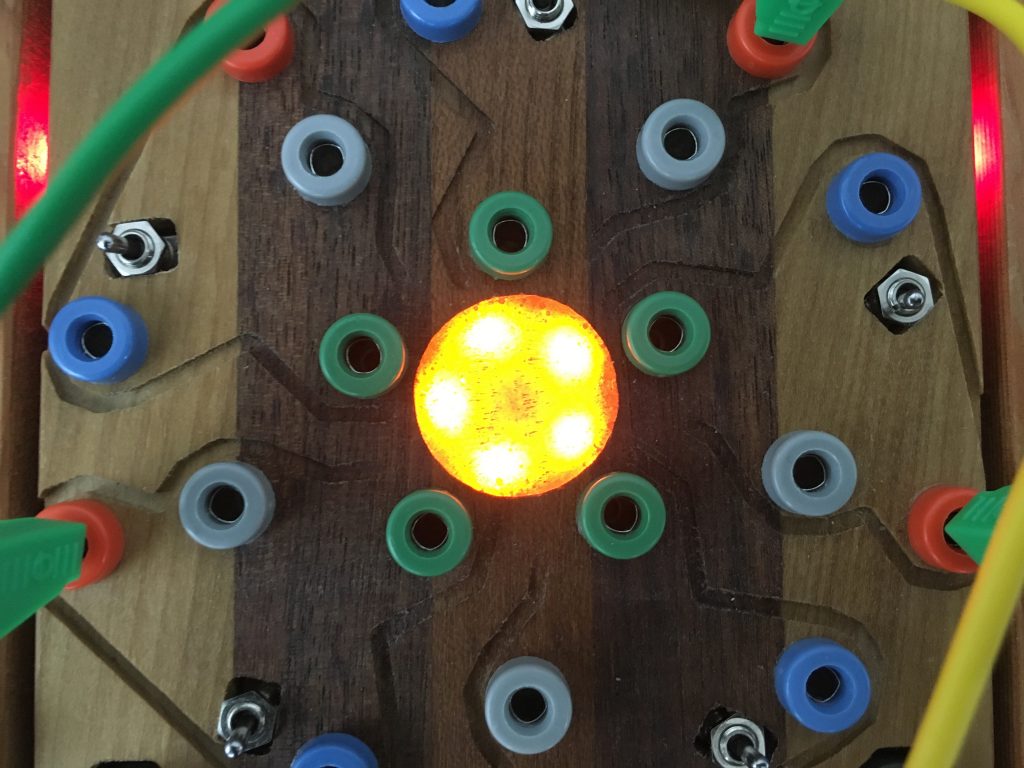
One of the composition techniques I gravitated towards with the Phonogene, is by starting a patch based around a grainy pitched down loop, using the end of cycle gate to sync my master clock to the loop and building the patch from there. So my first mission I set out to accomplish, was to try and recreate this workflow between the Cocoquantus and Plum Butter (a rhythmic synth I also obtained in the swap). So here is the first trick I’ve discovered, which appears to be completely undocumented anywhere online, but seems so obvious I’m surprised no-one has at least mentioned it somewhere?
Cocoquantus → Plum Butter (The Sanger Method).

To sync the Plum Butter to the Cocoquantus, it’s made simple (and rock solid) using the yellow ‘iron cross.’ output. If you connect this to audio, you can hear it generates a fairly wild harsh noise tone (or ‘secret sound’), which has it’s uses, of which are documented in various places online. However, connect this output to the green input of the plum butter sequencer ‘man with red steam’ and surprisingly (I say this as the tone it generates is not normally one I’d associate with a clock pulse anyway) the shift register clock will lock tightly to the length of the cocoquantus loop! The only caveat with this approach, is the Plum Butter only seems to pick up sync when the sample loop speed is reduced from its max value, this is no biggie as I always pitch my loops down to some degree anyway. nb make sure to ground your boxes together, as the sync goes a bit skewif if not!
So with these boxes obediently chugging along in tandem, it really opened up the possibilities of using them together. I mean, leaving everything completely unsynced is cool and all, but it’s nice to at least have the option of a master clock, should you need one!
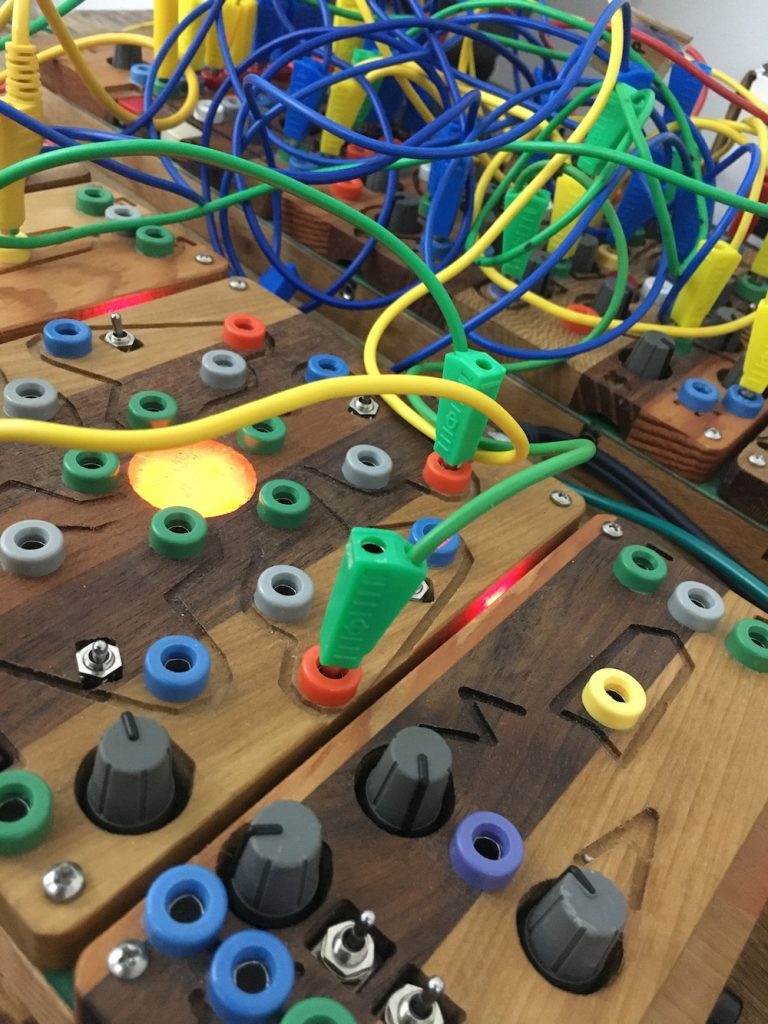
Banana Cross Pollination
I’ll talk more about the plum butter in it’s own post soon enough, but I’ll go on to say the cross pollination between the two devices goes far beyond simple clock sync. The chaotic matrix of oscillators provides useful modulation sources for the Plum Butter, which on its own, appears to lack some slow LFOs at least. This way I can get some nice synced looping between the two boxes, with lots of cross modulation, not a million miles from my old composition techniques in eurorack, except I’m getting sounds in the ballpark that resonate (accidental synth pun no.2) with me this time around, much quicker. On that note (groan) I think this kit certainly lends itself to ‘old school’ electronic music very well, which for me, is no bad thing. Basically simple sound sources, with complex modulation (ala Buchla, Serge et al).
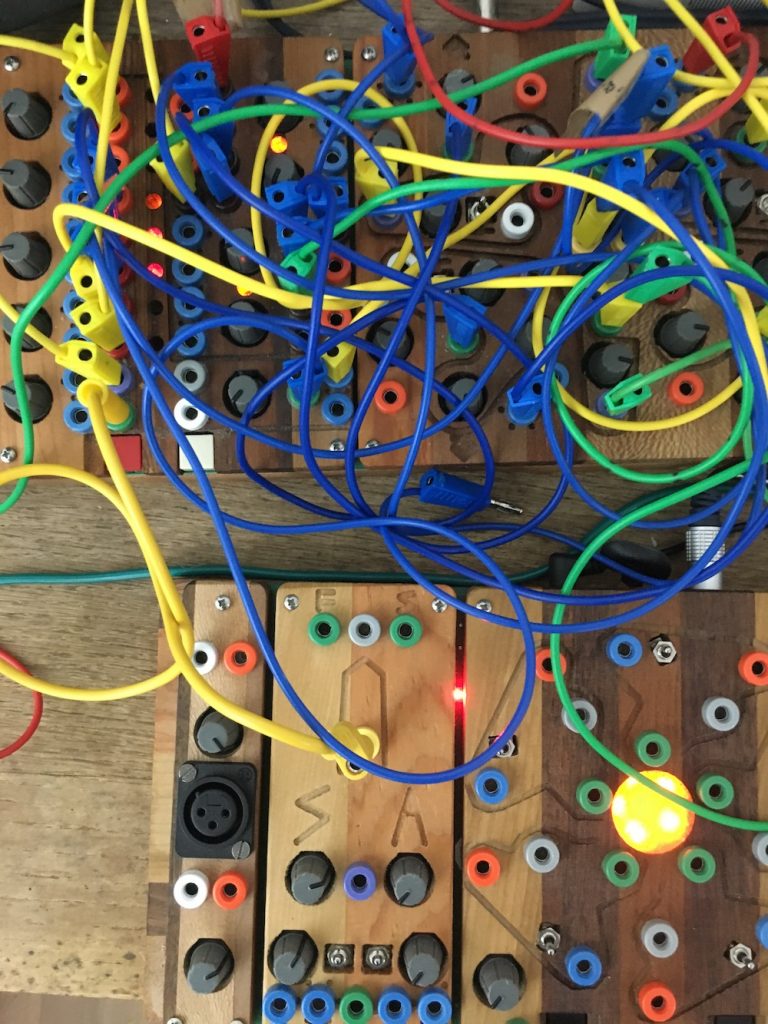
Anyway…
In short, I’m extremely content with the swap and the only thing I’ve missed from my Make Noise rig so far, is the attenuators they put on everything, there’s some modulation inputs on the Ciat Lonbarde I’d sometimes like to tame down a little here and there. But this is more likely user inexperience on my part, than design choices by the manufacturer.
